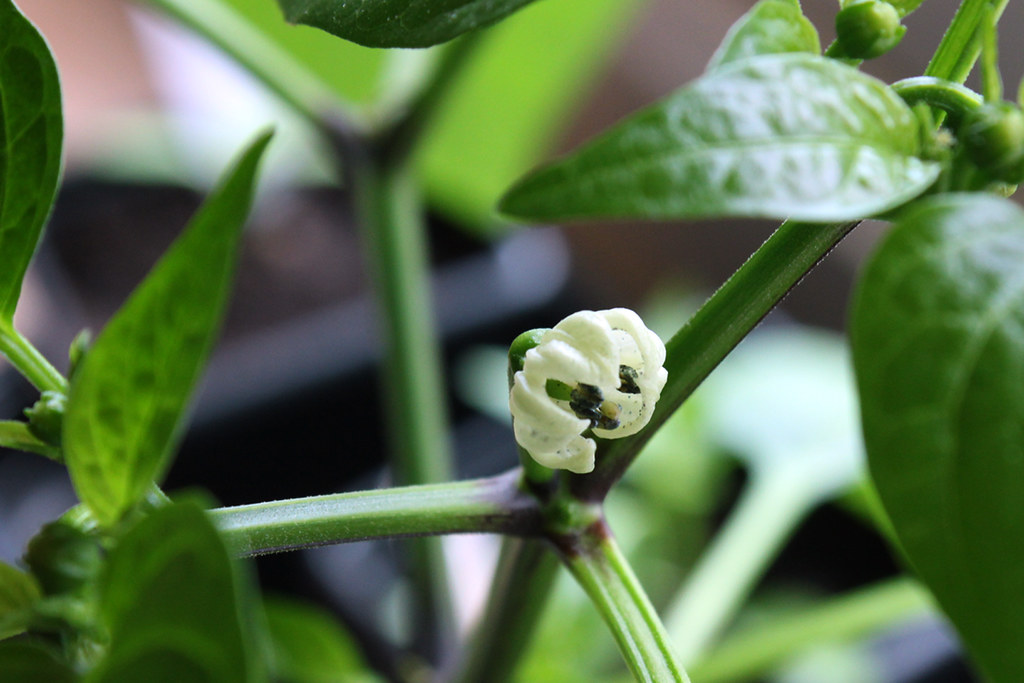I don't want to jinx myself by putting this in writing but ... I'm now quietly hopeful of growing some chillies this year since this flower appeared on my kitchen windowsill plant yesterday.
I'm being tentative in this claim as it's well documented that I'm rubbish at growing plants indoors. Outside, no problem, but inside? Bleh. I wonder why that is? There are many more buds waiting to open and I'm certain that this vigorous little plant has a lot more growing to do.
I bought the sturdy but tiny plant in mid-February from Joy Michaud of Sea Spring Seeds. She is an amazing and passionate chilli grower and it's a testament to her skill in giving plants a good start in life that this chilli has continued to thrive in my dubious care.
I didn't do at all well with my chilli growing from seed last year so this year decided to treat myself to head start in the chilli department - and it looks as though it's paying off. I've potted the plant on twice since purchase and it needs to go into its final pot this week as I can just see a few roots at the base of the current pot. This is possibly where I'm getting it right this year; I watched a couple of excellent videos from the Sea Spring Seeds youtube channel with some top tips. (Link below.)
Sea Spring harvested 2,407 chillies from one enormous Dorset Naga plant two years ago! Joy is generous with her advice on how it's done - here are a few of her tips:
- Seedlings should be pricked out into a one litre pot and, when the roots are showing at the base, potted on into a 7.5 litre pot; they'll grow rapidly and can then be repotted into successively larger containers, as needed. A plant will grow to the size of it's pot (depending on the variety of chilli you're growing) but a small pot will restrict its growth. (Video explaining this here.) The giant champion Dorset Naga was in a 160 litre container! Possibly too big for my space - and for my cooking needs - but you take my point.
- Mix dried chicken manure pellets into the potting compost when transplanting into each successive pot from 7.5 litres upwards; these are slow release and will provide your plant with essential nutrients all season.
- Water well and fertilise regularly throughout the season (in addition to the chicken manure pellets).
- When the plants get large, support the branches. Push a couple of canes into the side of the pot and circle the plant with string, securing it to the canes. Add more layers of string as the plant grows.
So there we have it. If I follow all this good advice, I might just have to book my slot at the local horticultural show this year!
For fellow chilli growing novices like myself, oceans of good advice can be found on the Sea Spring channel here: https://www.youtube.com/channel/UCfZtoYQwmLpJ3k6BYVH4aFw
Update.
By August, I had lovely large plants and chillies ready for harvest - all grown on my balcony. Read that post here: A chilli update



